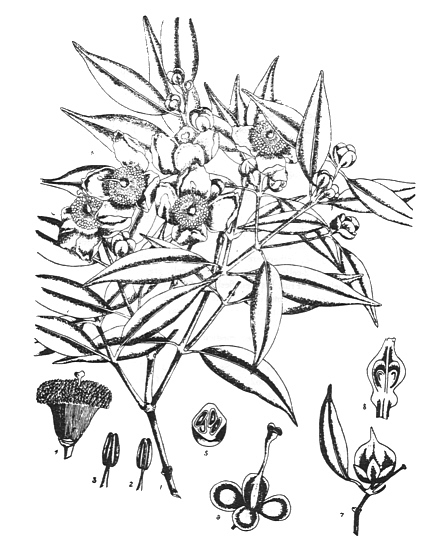

Zitierweise / cite as:
Carakasaṃhitā: Ausgewählte Texte aus der Carakasaṃhitā / übersetzt und erläutert von Alois Payer <1944 - >. -- Anhang A: Pflanzenbeschreibungen. -- Mesua ferrea L. -- Fassung vom 2007-06-27. -- URL: http://www.payer.de/ayurveda/pflanzen/mesua_ferrea.htm
Erstmals publiziert: 2007-06-27
Überarbeitungen:
Anlass: Lehrveranstaltung SS 2007
©opyright: Dieser Text steht der Allgemeinheit zur Verfügung. Eine Verwertung in Publikationen, die über übliche Zitate hinausgeht, bedarf der ausdrücklichen Genehmigung des Verfassers
Dieser Text ist Teil der Abteilung Sanskrit von Tüpfli's Global Village Library
WARNUNG: dies ist der Versuch einer
Übersetzung und Interpretation eines altindischen Textes. Es ist keine
medizinische Anleitung. Vor dem Gebrauch aller hier genannten Heilmittel wird
darum ausdrücklich gewarnt. Nur ein erfahrener, gut ausgebildeter ayurvedischer
Arzt kann Verschreibungen und Behandlungen machen!
Falls Sie die diakritischen Zeichen nicht dargestellt bekommen, installieren Sie eine Schrift mit Diakritika wie z.B. Tahoma.
Verwendete und zitierte Werke siehe: http://www.payer.de/ayurveda/caraka0001.htm

Abb.: Mesua ferrea L.
[Bildquelle: Kirtikar-Basu, ©1918]
Drury:
"Mesua ferrea (Linn.) N. O. Clusiaceae
- Belutta-champagam, Mal.
- Nagkushur, Beng.
Description.—Tree, 40 feet; sepals 4, unequal; petals 4, alternate with the sepals; leaves oblong-lanceolate, acuminated, glaucous beneath, upper side shining, midrib and margins coloured ; flowers stalked, axillary, large, white, fragrant; fruit about the size of a small apple, 1-celled, 1-4 seeded. Fl. March—April.—W. & A. Prod. i. 1021—Wight Icon. t. 117.—Roxb. Fl. Ind. ii. 605.—Rheede, iii. t. 53.------Courtallum hills.
Medical Uses.—The dried flowers are said to possess stimulant properties, but are probably of little importance in medicine. The expressed oil of the seeds is much employed by the natives in North Canara as an embrocation in rheumatism. The bark and roots are also an excellent bitter tonic in infusion or decoction. —Pharm. of India.
Economic Uses.—This tree is much cultivated in Java as well as in Malabar for the beauty and fragrance of its flowers. When dried they are mixed with other aromatics, such as the white sandal-wood and used for perfuming ointment. The fruit is reddish and wrinkled when ripe, with a rind like that of the chestnut, which latter it much resembles both in size, shape, substance, and taste. The tree bears fruit in six years from the planting of the seed, and continues to bear during three centuries. It is planted near houses, and affords an excellent shade. The bark, wood, and roots are bitter and sweet-scented. The blossoms are found in a dried state in the bazaars, and are called Naghesur; they are used medicinally, and are much esteemed for their fragrance, on which, latter account the Burmese grandees stuff their pillows with the dried anthers. Round the base, or rather at the bottom of the tender fruits, a tenacious and glutinous resin exudes with a sharp aromatic smell.—Roxb. Ainslie."
[Quelle: Drury, Heber <1819 - 1872>: The useful plants of India : with notices of their chief value in commerce, medicine, and the arts. -- 2d ed. with additions and corrections. London : Allen, 1873. -- xvi, 512 p. ; 22 cm. -- s.v.]
Dutt:
"MESUA FERREA. Sans. Nāgakesara. Vern. Nāgkesar. Beng. Hind.
The dried flowers of Mesua ferrea are much used as a fragrant adjunct to decoctions and oils. They are regarded as astringent and stomachic and useful in thirst, irritability of the stomach, excessive perspiration etc. A paste of the flowers with the addition of butter and sugar is recommended by most of the later writers, to be taken in bleeding piles. The powdered flowers mixed with old clarified butter, that has been washed a hundred times in water, are said to be an effectual application in burning of the feet."
[Quelle: Dutt, Uday Chand: The materia medica of the Hindus / Uday Chand Dutt. With a glossary of Indian plants by George King. -- 2. ed. with additions and alterations / by Binod Lall Sen & Ashutosh Sen. -- Calcutta, 1900. - XVIII, 356 S. -- S. 119.]